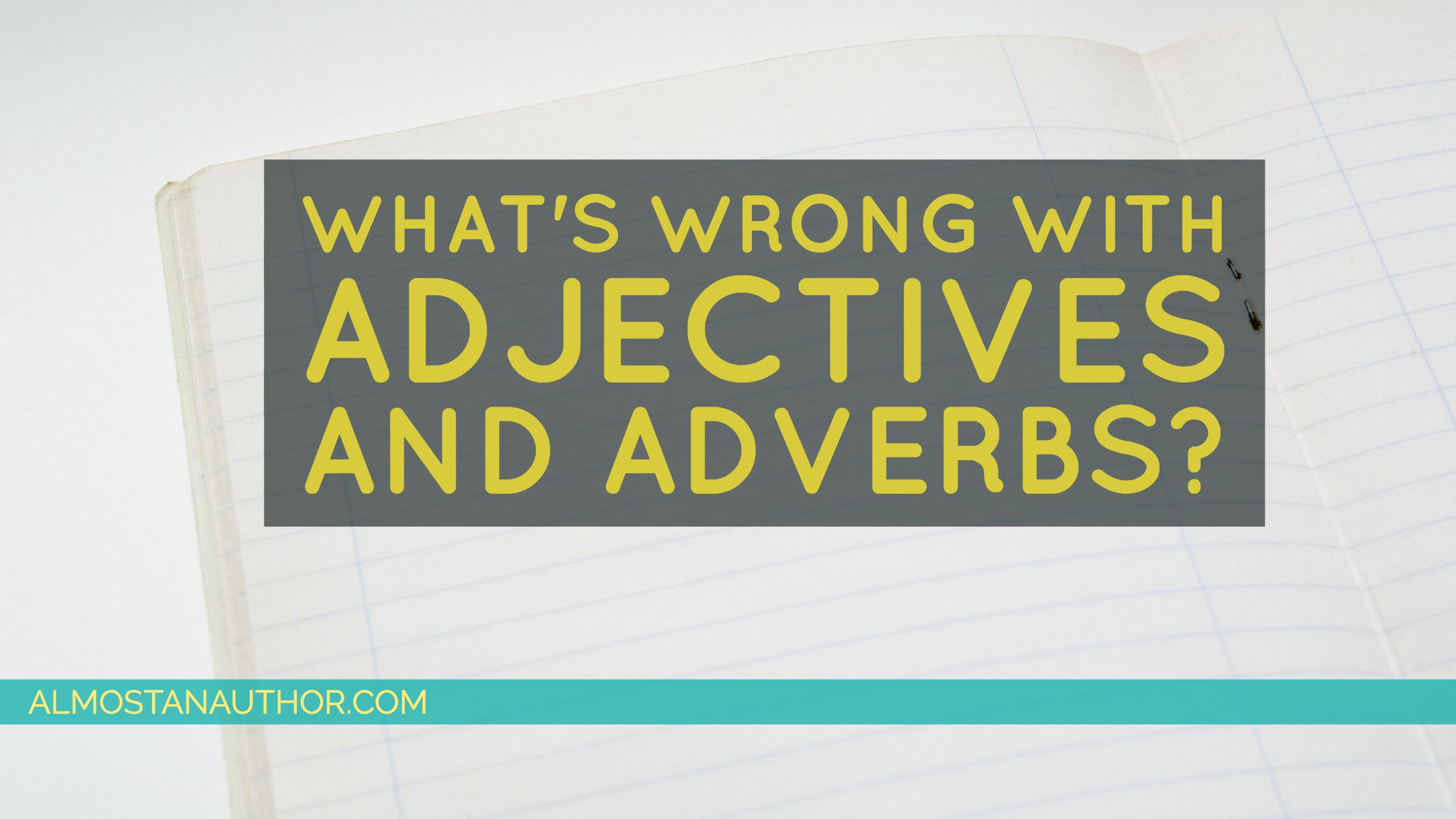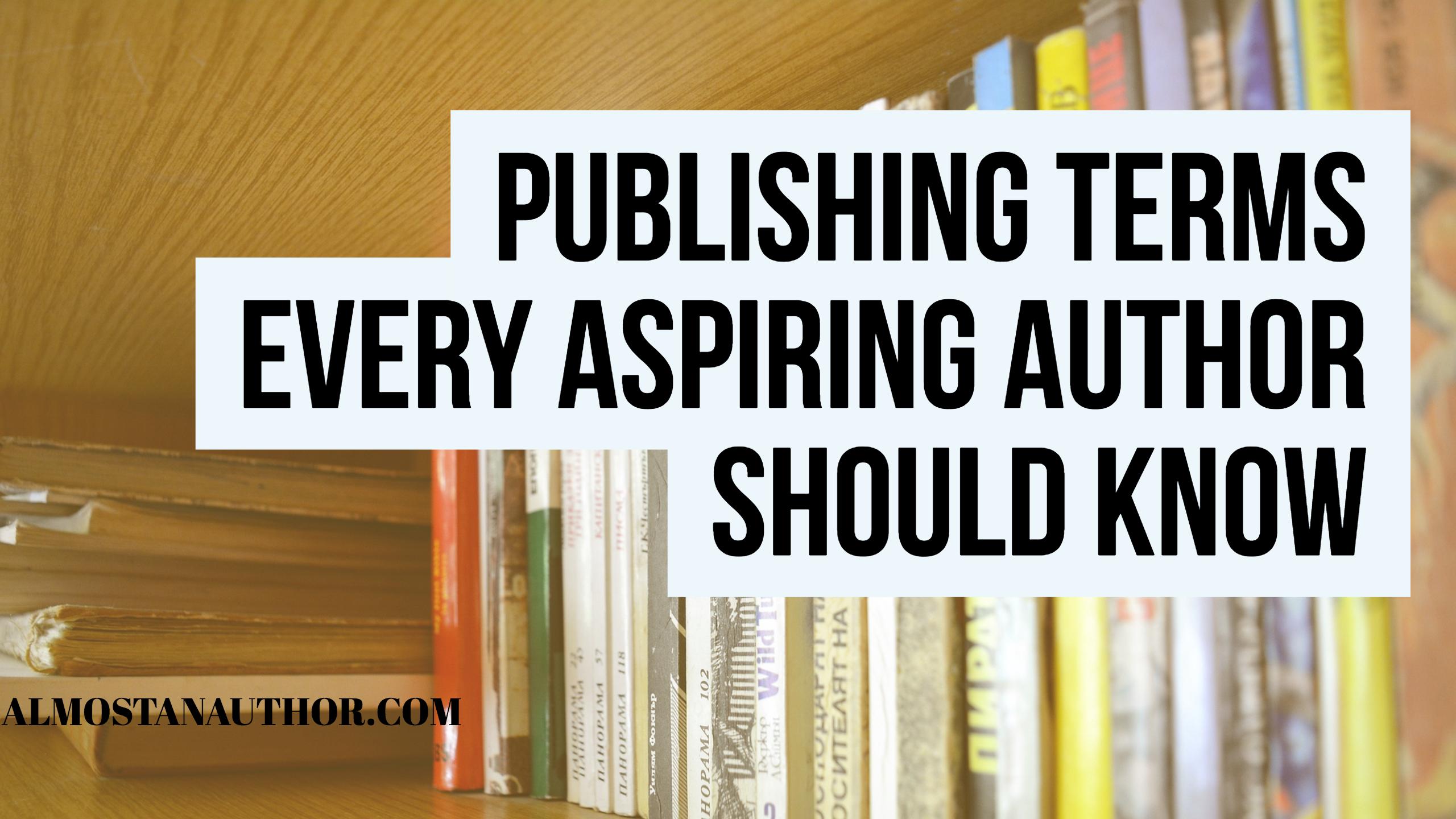When I was in elementary school, I was taught to incorporate as many adjectives and adverbs into my stories as possible.
My writing sounded like this:
The big, fat, yellow sun shined brightly against the light blue sky.
Colorful, isn’t it? And yet, sometimes those colors are the very things that distract the reader from the story. Literary agent, Sally Apokedak, puts it this way: “…too much description makes the colors all bleed together.”
Nowadays, adjectives and adverbs are considered to be lazy writing. They tend to tell the action, emotion, scenery, etc. instead of allowing the reader to experience it for themselves.
But didn’t books use adverbs and adjectives in the old days?
Yes. But we’re not still making black and white movies anymore, are we? We’ve improved our technology and have discovered new—better—ways of capturing film.
Same with books. We’ve discovered ways to write that invite the reader to delve deeper into the story. We want them to not only read about what the character sees; we want them to see it for themselves. We don’t want them to only read about what the character feels; we want them to hear it for themselves.
Overusing adverbs and adjectives is a form of telling rather than showing.
How to Fix This
Replace adverbs and adjectives with strong verbs and concrete nouns. This will help the reader picture the scene for themselves rather than be told how to picture it. Choose specific nouns and strong verbs that will convey the certain emotion that you want the reader to experience.
For example:
She ran quickly up the stairs.
Replace with a strong verb, such as:
She hurried up the stairs.
She rushed up the stairs.
The adverb isn’t necessary in those sentences. Plus, the verbs convey a much stronger sense of action, don’t you think?
Here’s another example:
The living room was dark and dreary. The long, draping curtains hung over the windows, blocking sunlight from shining brightly into the room.
By replacing the above adjectives with specific nouns, the phrase can be rewritten to the following:
The living room resembled a cave with its dim lighting. Even the pinch pleat curtains that draped over the windows were closed, as if it were a sin to let the sunlight stream into the room.
Should all adverbs and adjectives be deleted?
Not all of them. But nowadays, agents and publishers do not want adjectives and adverbs to slow down the pace of a story. And neither do the readers. Thanks to TV, movies, snapchats, and 3-minute YouTube videos, the attention span of the average reader has decreased a significant amount over the last couple of decades.
Although it is okay to use adjectives sparingly (adverb not intended!), try to find a way to find concrete nouns and verbs to describe the object without relying on an adjective to do the job.
Here’s another example:
The drink was hot.
Rather than telling the reader how the drink felt, use the effect it has on a character through using the senses—that way, the reader can experience it for themselves.
You can replace the above sentence with:
The drink burned my tongue.
Through the strong verb burned, we know that the drink must have been hot. The reader comes to that conclusion themselves. Not only that, but we can feel the burn on our own tongue since we have probably experienced a similar situation ourselves.
Conclusion
Too many adjectives and adverbs get in the way of the flow of the story. The reader can easily forget where the story was headed when the author tries to describe too many objects/places/people in detail.
Ask yourself: Is it important that the reader knows what color my character’s shoes are? Is it important to the story or the mood/emotion of this scene to show that the walls are gray? If not, leave the object blank. Readers love to use their own imagination and choose a color for themselves. Then, highlight on the specific and unique details that are significant to the story, characterization, mood/theme/emotion, or setting development.
The overuse of adjectives and adverbs is a common mistake that beginning writers make, and most agents and publishers cringe when they spot this.
Again, it’s okay to use sparingly. Adjectives tend to be more accepted than adverbs—just make sure that the adjectives are spread out and not clumped together within a sentence or paragraph.
Remember: When it comes to adverbs and adjectives, less is always more.
When you do decide to leave an adjective or adverb, be careful with where it is placed and how it’s used. Try your best to see if there is any other way you can describe the object, character, or setting.
If you have no choice but to keep it, then read over the page and make sure that the story continues to move along at a good pace. Make sure that the description is woven into the story and not the other way around.
How do you rewrite adjectives and adverbs in your manuscript?
[bctt tweet=”What’s Wrong With Adjectives & Adverbs? @TessaEmilyHall #writingtips #writingcraft ” username=””]







6 Comments
I understand how adjective and adverbs can be overused. But by using so few, we do make our writing longer, which I think affects the pace. The second example about the living room is thirteen words longer than the first, although I agree is more descriptive. The examples with the verbs are shorter. So what should a writer strive for? Is it all right to have a longer description as long as we don’t use adverbs and adjectives? I know when I rewrite to eliminate them my word count goes up.
Great question! Replacing adverbs and adjectives with concrete nouns and strong verbs is an example of showing instead of telling in our writing. When we show, we almost always will increase our word count. The reason is because our book is becoming living and breathing; it’s no longer simply a narrative. We’re fleshing the scenes out, and by doing so we’re inviting the reader into the story and giving them a better reading experience.
But no, it’s not a good idea to interrupt the flow of the story by writing too much flowery description. It’s possible to weave description into the scene without slowing down the pace. You can show the sensory details as the character experiences them, and give the reader just the right amount of scenery details that will spark their imagination and plant them in the scene. It takes a lot of practice and study to master this.
I hope that helps!
Thanks for the advice!
I agree with the above poster. Replacing all the adverbs makes a novel much longer and that does slow the pace. In addition, the reader may not actually ‘get’ the emotion from just a description.
Indeed, in the above example with ‘pinch-pleat’ curtains, I can only ask ‘what the heck are they? Whereas the long draped curtains is a description I can understand.
Quite frankly ‘ran quickly’ is a poor example. If you say ‘ran’ the word ‘quickly’ is redundant; the speed is already covered by the word ‘ran’. If you say ‘ran angrily’ there could be stomping as they run, but if you say they stomped up the stairs, you’ve lost the speed at which they stomped. You may keep the anger wit that description, but you’ve lost the urgency.
Physical postures which the author hopes may convey anger, are just as likely to convey fear, astonishment, or a range of completely different emotions.
Comparing old books to black and white films is, to use a cliché, comparing chalk with cheese. Those stories told in black and white were no more improved by adding colour than modern films have been improved by adding 3d.
I will finish by pointing out that in 50years of reading books (I started at 4yrs old) I have found no modern books which are all that compelling or enjoyable. Without adverbs they are bland and emotionless.
Give me a book with adverbs and I have a book with emotion which I do not have to guess. Keep the descriptions as well, but make sure that you include enough adverbs to make clear exactly what your description is trying to convey.
Making your reader guess does not endear you to them. The reader should not have to guess. THAT is lazy writing.
Tessa, Thanks for for clarifying the usage of strong verbs. Your examples made sense!
No problem! Thanks for commenting!